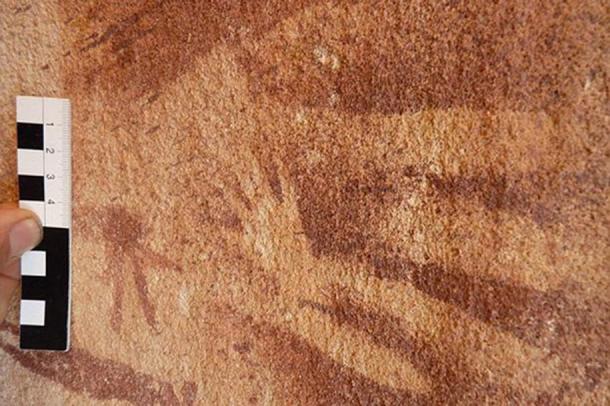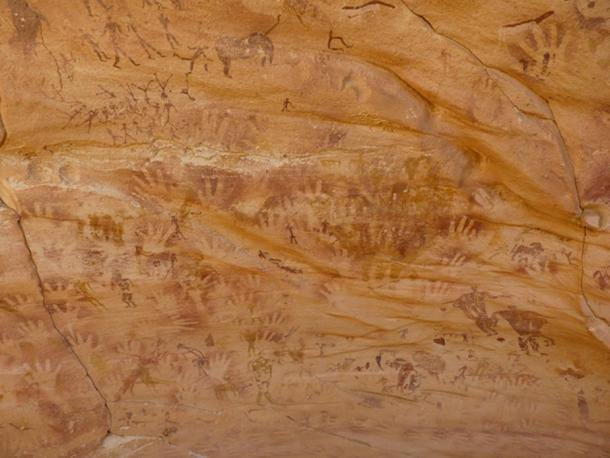

| Online: | |
| Visits: | |
| Stories: |

| Story Views | |
| Now: | |
| Last Hour: | |
| Last 24 Hours: | |
| Total: | |
Anthropologist Suggests that Tiny Stone Age Cave ‘Handprints’ Are Not Actually Human Hands

The 6,000-8,000-year-old cave paintings at the Wadi Sura II site in Egypt have been a source of interest since they were discovered in 2002. Although there are thousands of paintings that include a variety of images, a special interest has been given to the tiny “handprints” that were once thought to have been made by infants.
National Geographic reports that the images found in the cave include wild animals, human figures, and odd headless creatures, “but also hundreds of outlines of human handprints — more than had ever been seen before at a Saharan rock art site.” The mix of images have led people to nickname the site the “Cave of the Beasts.”
The name could be even more accurate if the anthropologist Emmanuelle Honoré of the McDonald Institute for Archaeological Research is correct about her hypothesis – that the tiny “handprints” were actually made by reptiles.

The walls of Wadi Sura II are covered with hundreds of hand stencils, images of people, wild animals and strange headless beasts. (Emmanuelle Honoré)
www.Ancient-Origins.net – Reconstructing the story of humanity’s past
Source: http://www.ancient-origins.net/news-history-archaeology/anthropologist-suggests-tiny-stone-age-cave-handprints-are-not-actually-020754


